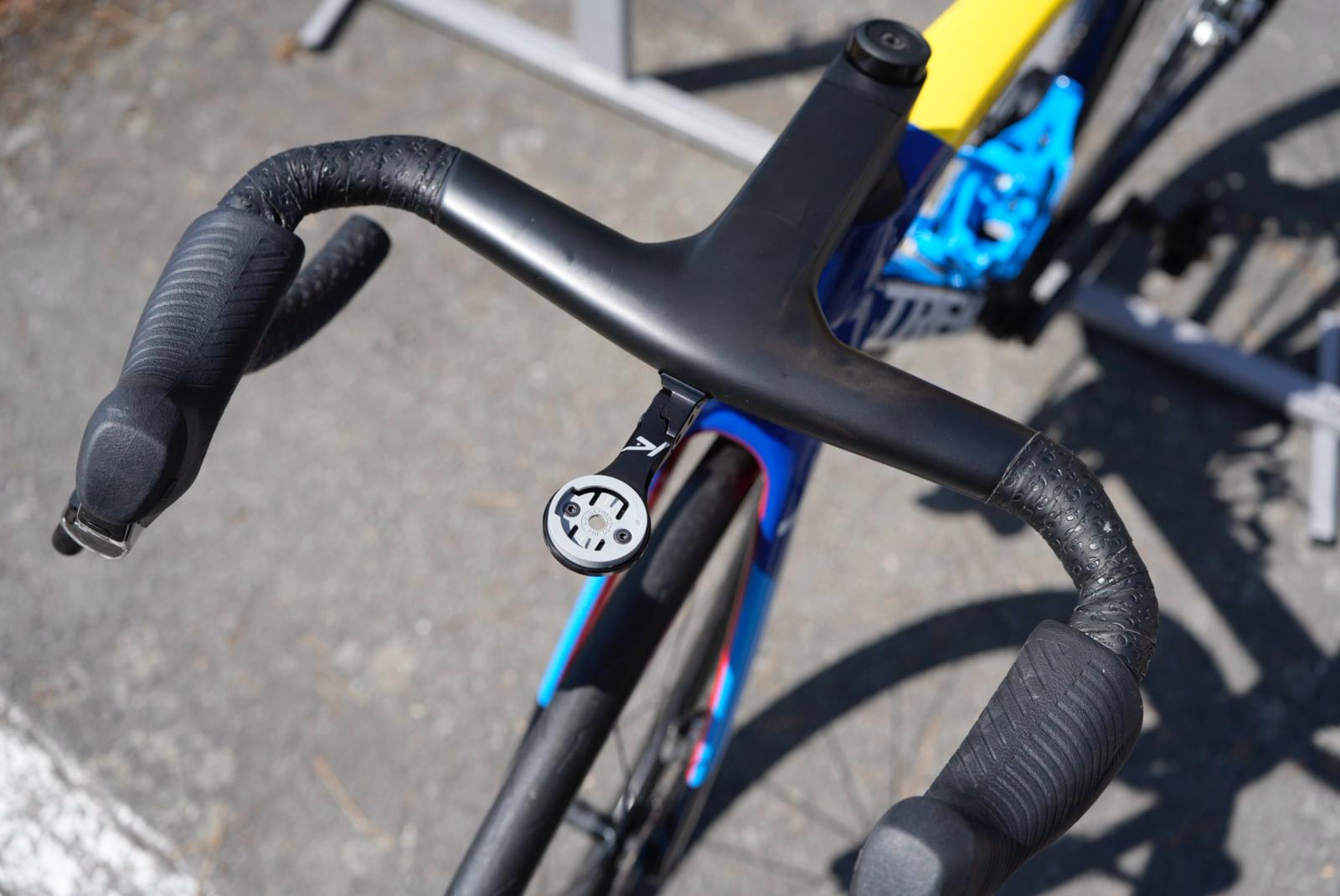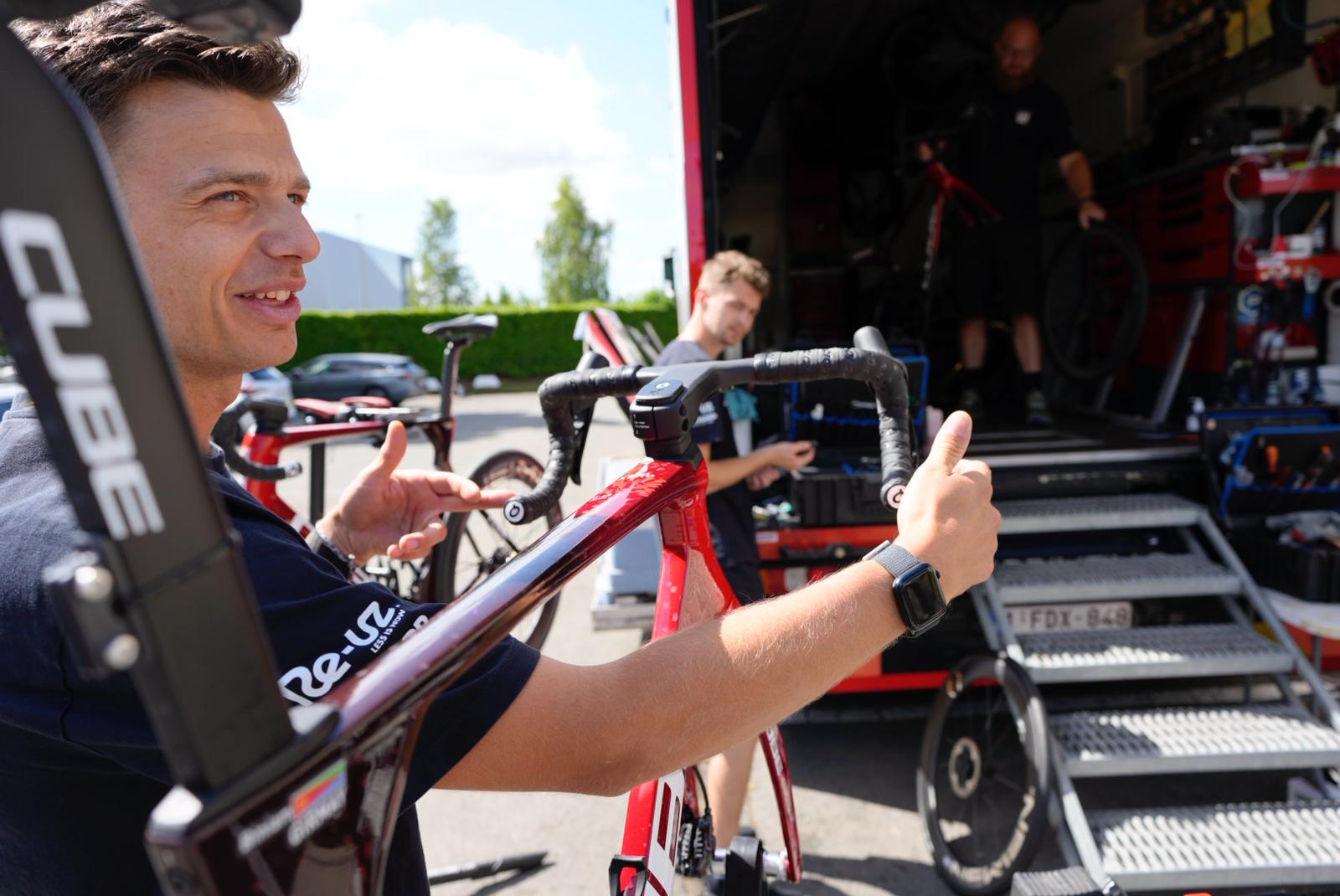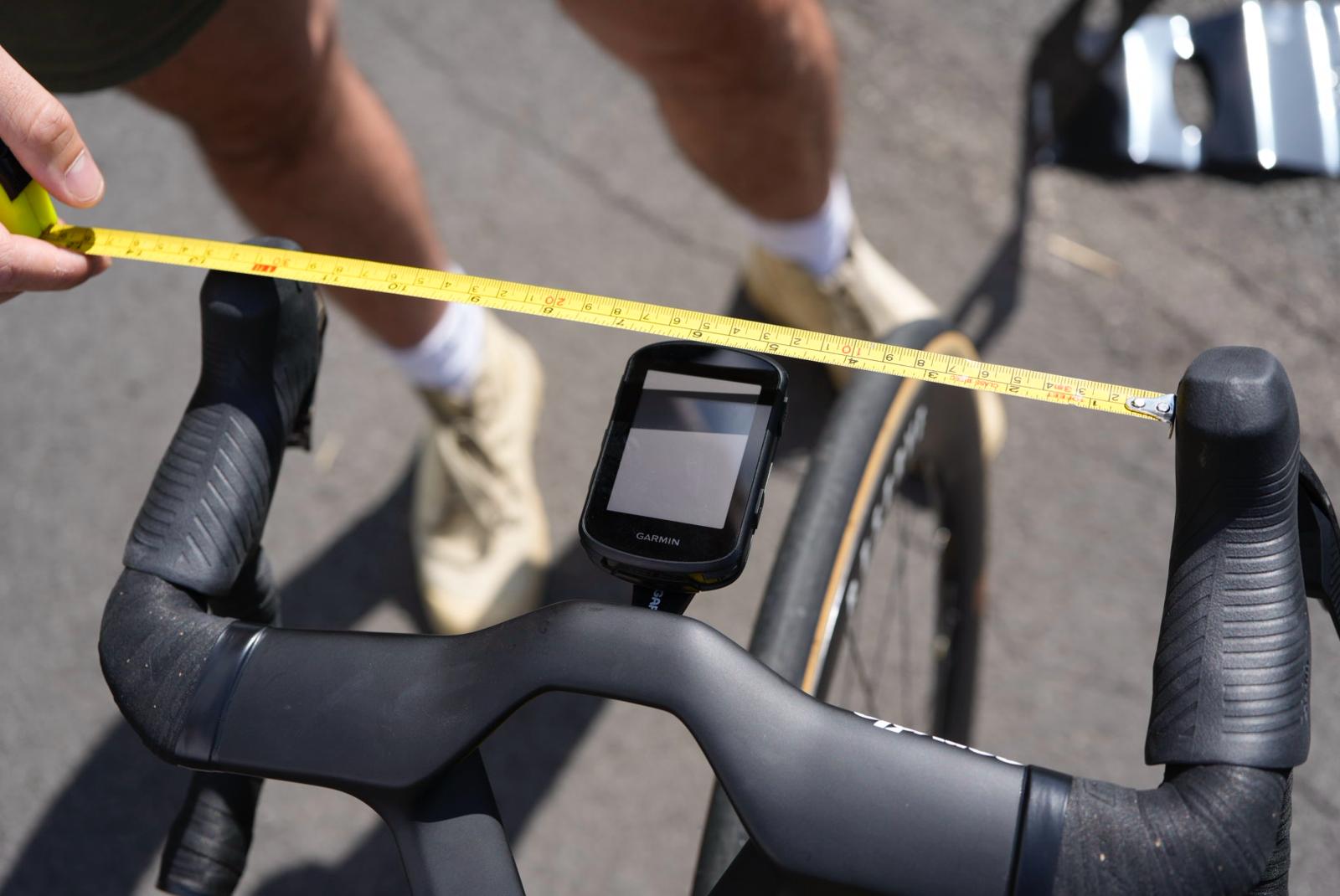
Ahead of the Tour de France Grand Depart on Saturday we visited team buses at the various hotels spread across Lille to judge the mood and find out what the team engineers and equipment suppliers are working on.
There was one subject everyone had a view on, but almost no one wanted to discuss on record: Recent changes to the UCI rules governing both gearing and bar width.
Most had pre-prepared, diplomatic responses at the ready, designed to keep on side with Cycling’s governing body. Comments along the lines of, “We’re trying to work as closely as possible with the UCI to better understand their aims in respect of the recent announcements” were commonplace, varying by just a few words from team bus to team bus. The actual mood is one of disbelief.
While not many wanted to discuss the issue on record, no one prevented us from measuring their riders’ bars. In fact, some even stepped in to help us with filming, as they clearly don’t want this to be swept under the carpet.
We asked Mikey van Kruiningen, equipment director at Intermarché-Wanty if he’d mind us photographing him whilst he measured the bars on one of his athletes bikes, expecting that same diplomatic response. Instead he saidl; “anything we can do to pressure the UCI, is ok by me”.
It’s clear the changes to the rules in respect of bar width are incredibly unpopular, with fears of significant disruption, not just to female and smaller riders as widely reported, but also to riders such as Matteo Jorgenson at Visma Lease-a-bike who towers above many in the peloton. The American is most comfortable on a bar which will be outlawed when the rule changes take effect in 2026.

For teams like Intermarché-Wanty, who credit much of their success over the last few years to their experiments with longer, narrower positions, they will be particularly badly affected. The bigger issue they believe is the impact on body geometry, performance and comfort due to their team wide commitment to long stems and narrow bars.
Their approach means barely a single bike made available to us for measuring is running more than a 42cm bar. Some we measured came in at more than six centimetres under the proposed new legal limit – inside 25cm for the measurement between brake hoods. None of the bars and levers look extreme or exceeded the current tilt limit of 10 degrees but all will be ruled illegal as of January 2026, without a UCI rethink on the rules.
Less relevant to the rules, but interesting none the less is that not one team bike available at Intermarché-Wanty is fitted with a stem shorter than 130mm. 140mm is the most common and at least two bikes were running 160mm stems. Whilst Intermarché-Wanty are clearly committed to long and low positions for their competitors, 160mm is also not as uncommon a sight as you might think in other team camps.

Elsewhere the picture is more varied. A quick stop at Lidl-Trek team bus (after the majority of riders had departed for a ride) to measure Mathias Skjelmose’s Project One Trek Domane yielded yet another bar which will soon be outlawed - inside 25cm at the hoods and just 36cm centre to centre on the tops.
In fact, almost all bars we measured were outside of the new measurement, and going on other conversations at least two thirds of the teams we talked to will have equipment significantly outside of the measurement regulations when they come in next January.







